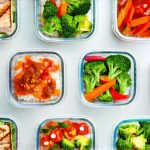Understanding the Link Between Food & Bladder Health
Many people experiencing frequent urination, urgency, or even incontinence often search for solutions focused on pelvic floor exercises or medication. While those are certainly important tools, a significant – and frequently overlooked – aspect of bladder control lies in dietary habits. The truth is that what we eat and how we prepare our food can dramatically impact bladder function. It’s not necessarily about eliminating entire food groups, but rather understanding which ingredients and preparation methods may inadvertently trigger bladder irritation, leading to uncomfortable symptoms. This isn’t about restrictive dieting; it’s about mindful eating and making informed choices that support overall wellbeing, including a healthy bladder.
The connection between diet and bladder health is complex. Certain foods contain compounds that can directly irritate the bladder lining, while others influence hydration levels or impact the nervous system which controls bladder function. Beyond the food itself, how we prepare meals plays a crucial role. Excessive spices, certain cooking methods, and even the order in which foods are combined can all contribute to bladder sensitivity. This article will delve into practical food preparation habits that can help minimize these triggers and promote bladder comfort, empowering you to take control of your wellbeing from the kitchen outwards.
Identifying Common Bladder Irritants & Strategic Preparation
Many common dietary culprits are known to potentially aggravate bladder issues. These aren’t universal irritants – everyone reacts differently – but they frequently appear on lists compiled by urologists and those with sensitive bladders. Classic examples include caffeine, alcohol, artificial sweeteners, citrus fruits, tomatoes and tomato-based products, spicy foods, carbonated beverages, and chocolate. However, it’s not just what you eat, but also how you prepare it that matters. For instance, a seemingly harmless apple can become problematic if paired with a highly acidic beverage like orange juice.
Strategic food preparation is about mitigating the irritating potential of these foods. This means opting for gentler cooking methods like steaming or baking over frying, which can introduce inflammatory fats and exacerbate sensitivity. When using spices, start small and gradually increase to assess tolerance; avoiding overly pungent combinations is also helpful. Mindful portion control plays a role too – even bladder-friendly foods can cause issues in large quantities. Finally, consider how you combine foods. Pairing acidic foods with alkaline options (like adding spinach to a citrus salad) might help neutralize some of the irritation.
One often underestimated aspect is ingredient quality. Choosing organic produce when possible minimizes exposure to pesticides and herbicides which could potentially contribute to inflammation and bladder sensitivity. Similarly, opting for whole, unprocessed foods reduces the intake of additives and preservatives known to sometimes trigger symptoms. This isn’t about perfection; it’s about making informed choices that prioritize gut health and overall wellbeing, ultimately benefiting bladder function. To further understand hidden irritants, consider reviewing food labels and identifying potential triggers.
Hydration & Fluid Intake Strategies
Adequate hydration is absolutely essential for a healthy bladder, but how you hydrate matters just as much as how much fluid you consume. Simply drinking large volumes of water all at once can overwhelm the bladder, leading to increased urgency and frequency. Instead, aim for consistent sipping throughout the day. This distributes the fluid load more evenly, giving your bladder time to process it without being overwhelmed.
- Spread it out: Drink small amounts (4-6 ounces) every 2-3 hours instead of large gulps infrequently.
- Timing is key: Reduce fluid intake a few hours before bedtime to minimize nighttime awakenings.
- Choose wisely: While water is best, herbal teas (caffeine-free!) and diluted fruit juices can contribute to hydration. Avoid sugary drinks and excessive caffeine/alcohol, which are known bladder irritants.
Beyond the type of fluid, consider temperature. Some individuals find that very cold beverages exacerbate bladder sensitivity, while others prefer room temperature or slightly warm fluids. This is highly individual, so pay attention to your own body’s response. It’s also important to remember that hydration isn’t solely about drinking liquids; many fruits and vegetables have high water content and contribute significantly to overall fluid intake.
Minimizing Acidic Food Impact
Acidic foods are a frequent trigger for bladder irritation. However, completely eliminating them is often unrealistic and unnecessary. The key lies in mitigating their impact through preparation techniques and strategic combinations. Tomatoes, citrus fruits, vinegar-based dressings, and even fermented foods can all contribute to acidity.
- Neutralizing pairings: Combine acidic foods with alkaline options. For example:
- Lemon water with a slice of cucumber.
- Tomato sauce served alongside spinach or kale.
- Citrus fruits paired with yogurt or banana.
- Cooking methods matter: Roasting tomatoes can actually reduce their acidity compared to consuming them raw. Similarly, marinating citrus fruits in honey or maple syrup can lessen their tartness.
- Portion control: Smaller portions of acidic foods are less likely to overwhelm the bladder.
It’s also crucial to be mindful of hidden sources of acidity. Many processed foods contain citric acid as a preservative, and even seemingly innocuous condiments like ketchup can contribute to overall acidity levels. Reading labels carefully and opting for natural alternatives whenever possible is a proactive step towards bladder health. Don’t assume something is bladder-friendly based on its perceived healthiness; always assess your individual response.
Spice Levels & Digestive Comfort
Spicy foods are notorious bladder irritants, but again, it’s not about complete avoidance for everyone. The level of spice tolerance varies significantly. For those with sensitive bladders, even mild spices can trigger symptoms. However, the way you use and combine spices plays a crucial role in minimizing irritation.
- Start small: Begin with very small amounts of spice and gradually increase to assess your tolerance.
- Balance is key: Pair spicy foods with cooling ingredients like yogurt, avocado, or cucumber. This helps counteract the heat and reduces bladder irritation.
- Cooking methods: Adding spices towards the end of cooking preserves their flavor but also minimizes their intensity compared to prolonged simmering.
Furthermore, digestive discomfort often accompanies bladder issues. Spicy food can exacerbate gut inflammation which in turn impacts bladder function. Ensuring good digestion is crucial. This includes chewing your food thoroughly, eating slowly, and avoiding large meals. Consider incorporating probiotic-rich foods into your diet to support a healthy gut microbiome – a happy gut contributes to a happier bladder! Focus on digestive health alongside dietary adjustments for optimal results. You can also explore daily habits that specifically support bladder ease.
This information provides general guidance and should not be considered medical advice. Always consult with a healthcare professional or registered dietitian for personalized recommendations tailored to your specific needs and medical history. Consider reviewing food scheduling habits to avoid overfilling the bladder.





















